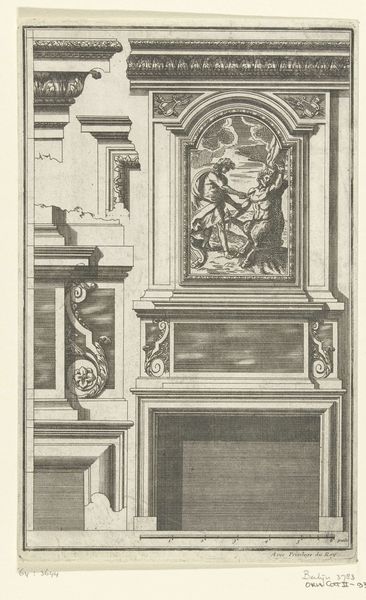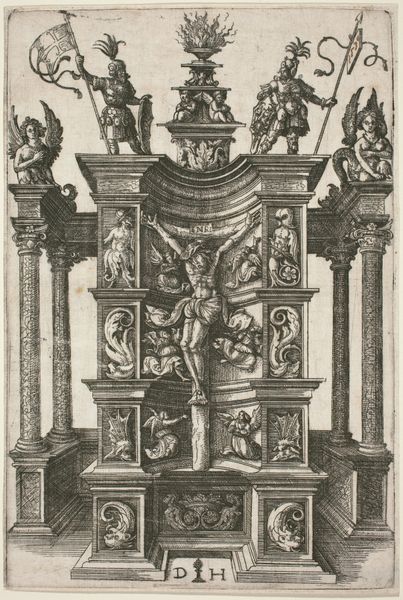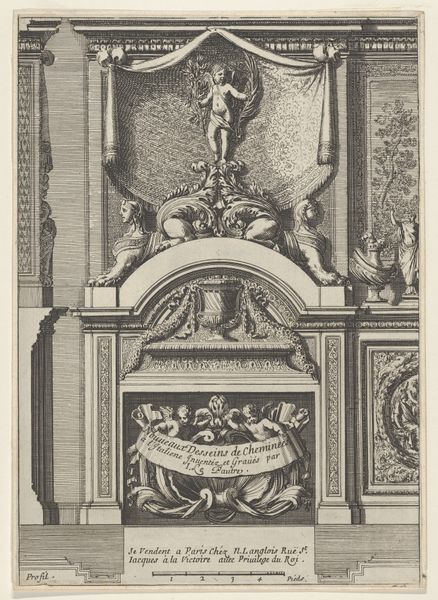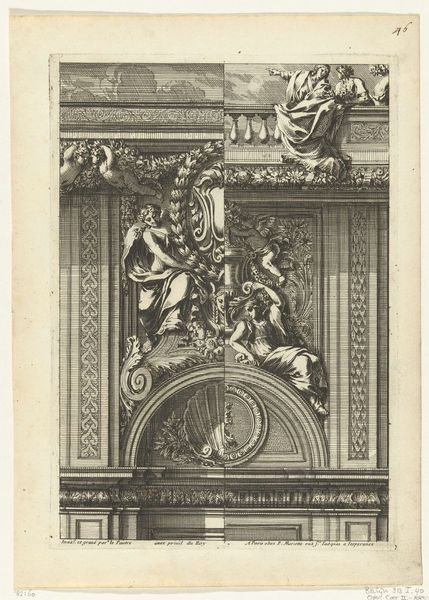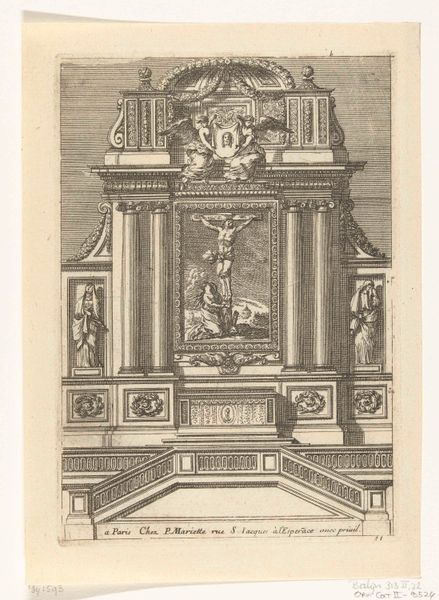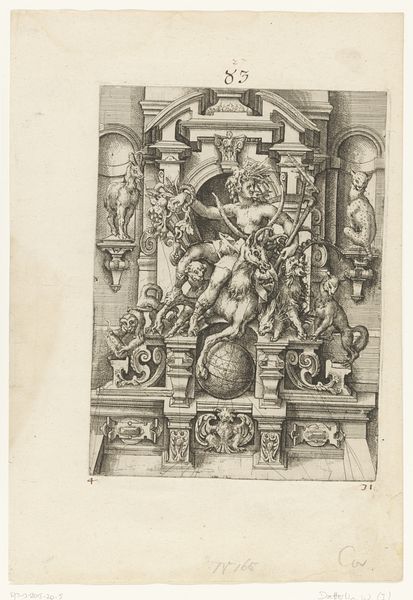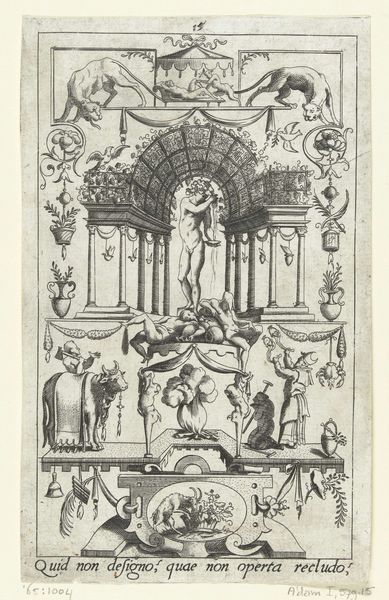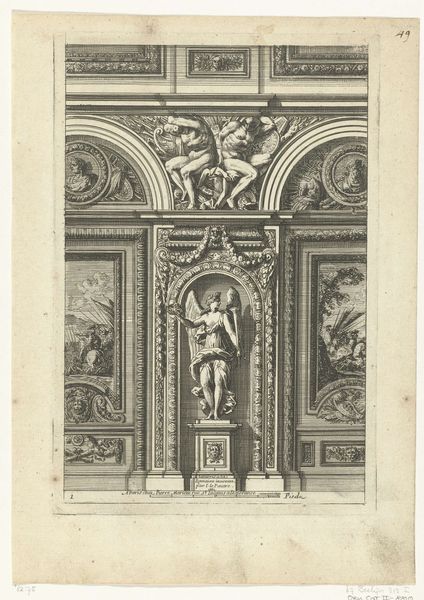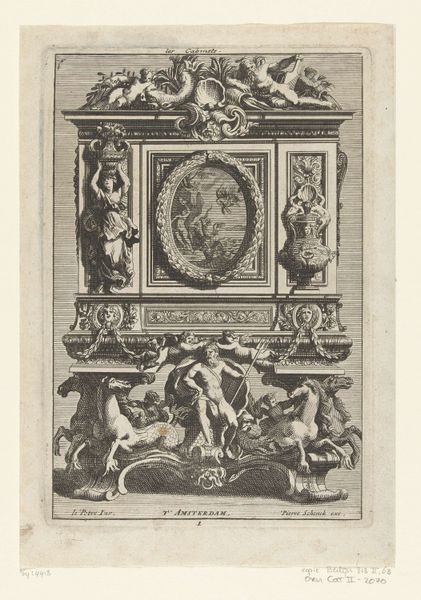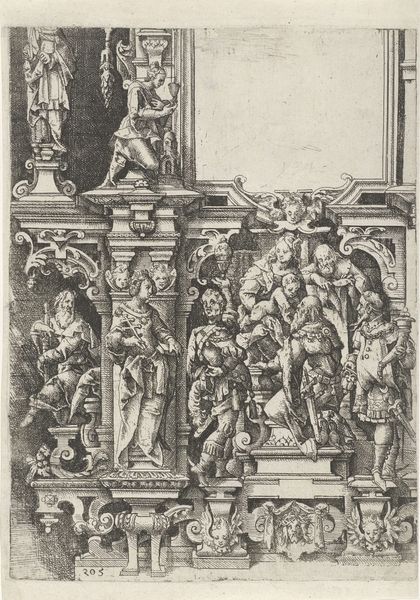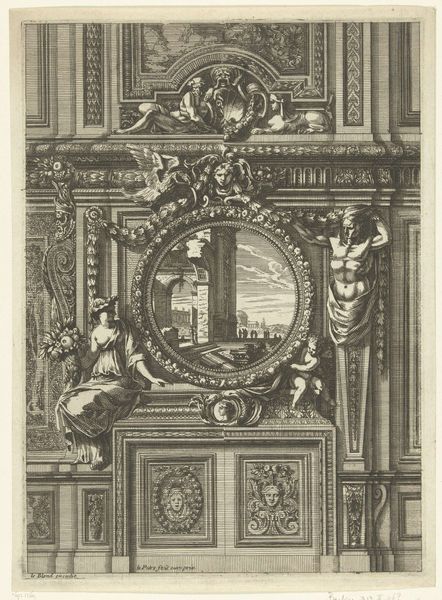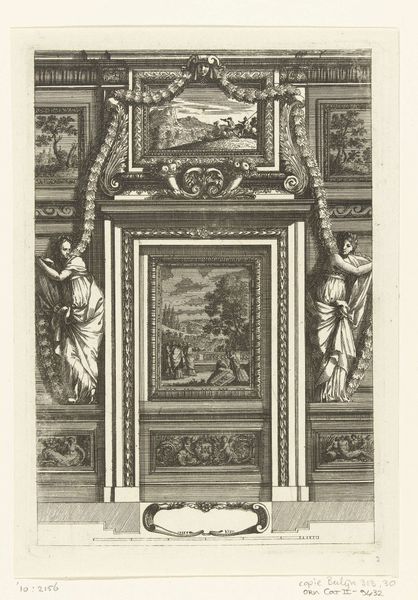
print, engraving
# print
#
old engraving style
#
figuration
#
history-painting
#
northern-renaissance
#
engraving
Dimensions: height 252 mm, width 184 mm
Copyright: Rijks Museum: Open Domain
Editor: Here we have Wendel Dietterlin’s "Terechtstelling," an engraving created sometime between 1560 and 1598. It’s packed with figures within an architectural frame. I'm immediately struck by the brutal scene being depicted. What is your reading of the scene presented in this work? Curator: Well, it’s crucial to recognize that this image wouldn't have existed, certainly not in this form, without the historical context of religious and political upheaval across Europe. Consider the power dynamics in play: Who commissions such imagery, and what message are they trying to convey about justice, authority, and public order? What is glorified through the depiction of the capital execution of supposed traitors? Editor: It does seem to be a statement, more than a straightforward historical record. There's such theatrical staging of the execution itself, with the architecture looming large. Curator: Exactly. And think about the intended audience. Prints like this were often disseminated widely. What role did these images play in shaping public opinion and reinforcing the dominant power structures? Could this also have functioned as some sort of entertainment or public ritual? Editor: So, it's about controlling the narrative through art? Sort of propagandistic, perhaps? Curator: It’s difficult to use the term "propaganda" outright, but yes, imagery had great power in those days. It’s essential to consider how the politics of imagery affected its production and reception. In your mind, how might a contemporary audience receive this image compared to one in the late 16th century? Editor: Well, I think, now, the clear message and theatrical framing of it are more easily read as a blatant display of power, whereas an earlier audience may have viewed the scene and related politics as just part of their reality. I learned a lot today, thank you. Curator: The layers are really intricate when examined closely through this kind of historical lens. I, too, found this interesting.
Comments
No comments
Be the first to comment and join the conversation on the ultimate creative platform.
